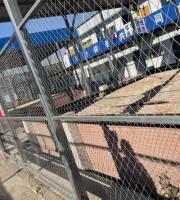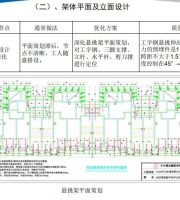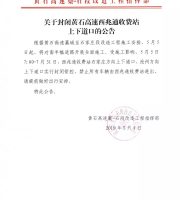Theoretically, the tax burden of construction enterprises should be reduced after the implementation of “replacing business tax with value-added tax”, but there is still a certain deviation between the theoretical analysis and the actual situation in practice.
These actual situations will bring certain difficulties to the deduction of value-added tax and input tax of construction enterprises.
In order to reduce costs during the construction of engineering projects, they generally choose to purchase all kinds of materials from nearby places.
02 prominent problems in tax payment of construction enterprises the input tax deduction of value-added tax is insufficient.
After replacing business tax with value-added tax, the depreciation of self owned equipment is accrued to be included in the cost.
4.
However, if the construction area is remote, local material suppliers may not be able to provide special VAT invoices.
After the full implementation of “replacing business tax with value-added tax”, it is found that the actual tax burden of many construction enterprises is higher than that before the implementation of “replacing business tax with value-added tax”.
Even if the input of the project operating cost was too large and there was a loss, the business tax and surtax should still be borne by the enterprise according to the contract completion.
For example, for concrete produced with cement as the main raw material, the applicable tax rate is 3%; Some materials purchased from small-scale taxpayers can only issue 3% special VAT invoices; Some materials cannot issue special VAT invoices or have no invoices at all, such as sand, gravel, brick and tile and other ground materials, which are often monopolized by individual industrial and commercial households or natural persons in the construction site.
It is difficult to obtain invoice deduction for some sporadic expenses incurred during project construction, such as the procurement of sporadic auxiliary materials and tools, the construction expenses of temporary personnel, etc.
The risk of invoice management is high.
In the process of project construction, the construction enterprise needs to advance the project funds and pay the quality deposit to the relevant departments.
All kinds of machinery, equipment and vehicles temporarily rented cannot obtain input.
Due to the diversity of construction sites and complex environment of construction enterprises, the source of materials required is also complex, and the applicable tax rate for some materials is low.
The tax categories involved in construction enterprises mainly include: enterprise income tax, value-added tax, urban construction tax, education surcharge, local education surcharge, shareholder personal income tax and so on.
Generally, construction projects have long construction cycle and large amount, and the deduction of cost invoices during construction, The tax burden borne by enterprises requires a comprehensive management budget.
In this case, if the equipment leasing enterprise meets the conditions for becoming a small-scale taxpayer, it will try its best to change and choose a simple collection method to pay value-added tax at a collection rate of 3% to reduce its enterprise tax burden.
Construction projects are irreplaceable and unique, and almost no two projects are exactly the same; 2.
The cost of construction projects is generally composed of project construction materials, use fees of machinery and equipment, labor fees of construction personnel and other indirect expenses.
2.
They mainly obtain income and realize profits by contracting various projects and providing construction and installation services.
In China’s construction enterprises, due to the simple and extensive management mode of the enterprise itself, the tax system reform of “replacing business tax with value-added tax” has caused the impact of increasing instead of decreasing the tax burden, which has brought a heavier tax burden to the enterprise.
These taxpayers do not have the qualification to issue special VAT invoices, or even cannot issue invoices; Another common phenomenon is that the main materials and some equipment of some engineering projects are purchased and invoiced by the construction party, and the construction enterprise cannot obtain the invoice.
In practice, it is generally difficult for construction enterprises to obtain special VAT invoices for input tax deduction, which increases the tax cost of enterprises to a certain extent and reduces the effective profits of enterprises.
Construction enterprises lack labor tickets.
Engineering projects are generally separated from the place of registration of enterprise organizations.
3.
1.
The determination of income and the choice of tax rate are the focus of tax planning of construction enterprises.
different business forms bear different tax obligations; 4.
The project cost is high and the investment amount is large.
Construction enterprise is a special industry, and its industry characteristics are mainly reflected in the following aspects: 1.
The equipment depreciation accrued by the enterprise cannot deduct the input tax, but can only be deducted at one time at the time of purchase.
Value added tax, surtax and enterprise income tax are the main taxes of construction industry.
Before the implementation of the “replacing business tax with value-added tax” policy, there was a tax burden that was not linked to income and cost.
The tax planning methods used in the previous business tax era are no longer in line with the actual situation after the “replacing business tax with value-added tax”.
In the leasing industry, after replacing business tax with value-added tax, the operating lease tax rate of tangible movable property is 13%, an increase of 8%, which increases the tax burden of the leasing industry and seriously threatens its survival and development.
It is adjustable, and the current income and current cost are recognized according to the completion progress of the project; 4.
There are various business forms, such as general contracting, subcontracting, subcontracting, etc.
Deduction of material input tax.
Labor costs of construction enterprises labor costs of construction enterprises include internal employee salaries and external labor costs.
Construction enterprises have obvious characteristics of operation in different places.
Tax planning refers to making reasonable use of the preferential policies and possible choices given by the tax law to make prior arrangements and planning for various economic activities, so as to achieve the purpose of tax saving or delaying tax payment.
Remote construction projects occupy most of the projects of construction enterprises, which provides space for enterprises to use the organizational form for tax planning; 3.
The construction period is long and there are many uncertain factors in the construction process; 3.
In practice, it is common for workers to pay wages in cash or turn public to private, and there is no ticket or no input.
Therefore, according to the characteristics of production and operation of construction enterprises and supported by scientific tax planning, enterprises can avoid the problems of excessive tax payment and blind tax payment, save the occupation of funds, delay the outflow of funds and maximize the benefits of enterprises.
The professional quality of financial personnel and their understanding of tax policies must keep pace with the times.
they not only need to face the choice of general tax calculation and simple tax calculation, but also need to pay attention to subcontracting, asset and goods sales Labor demand and provision; 2.
The tax payment characteristics of construction enterprises are mainly reflected in the following aspects: 1.
Most of the materials, materials and labor costs cannot be deducted from the input tax, which increases the tax burden of the enterprise and increases the capital occupation of the enterprise; 5.
The proportion of labor costs accounts for about 20% of the total construction cost, and it is a labor-intensive industry.
The input tax cannot be deducted from the internal employee salaries, and the input tax is generally deducted from the tax rate of external labor subcontracting at a simple tax rate of 3%, For the construction industry, 9% of the output tax is not enough to deduct, which has also become one of the important reasons for the increase of enterprise tax burden.
As an important pillar industry in China, the construction industry, “replacing business tax with value-added tax” is both an opportunity and a challenge for construction enterprises.
Under the full implementation of the value-added tax system in the construction industry, the requirements for invoice management are very high.
Therefore, construction enterprises should attach great importance to tax management and reasonably use tax planning methods to reduce the tax burden of enterprises.
The operation and management of construction enterprises are very complex, involving project planning and design, equipment and facility leasing, material procurement, installation services, etc.
If the traditional tax policy is adopted, some input taxes may not be deductible and some links may pay more taxes..
01 characteristics of construction enterprises the production and operation of construction enterprises have their own characteristics.
The mechanical equipment used by construction enterprises mainly comes from self purchase and operating lease.
In this way, the input tax that can be deducted from the invoices of the operating lease industry received by the construction enterprises will be reduced, resulting in an increase in the tax burden of the enterprises, thus squeezing the profit space of the enterprises.



